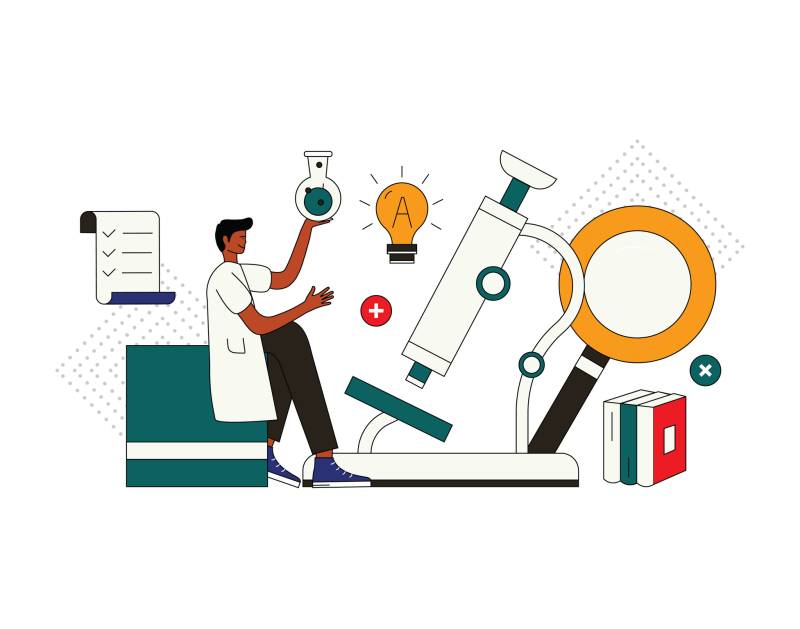What Is an AI Chatbot? Types, Features, and Benefits
An AI chatbot is software that simulates conversations using AI. It includes various types, key features, and practical business benefits.
AI chatbots are everywhere now. Whether you’re asking for directions, ordering food, or chatting with a brand's support team, chances are you’ve interacted with one without even realizing it. These bots aren’t just programmed to respond—they actually learn from conversations to give more personalized replies each time. In simple terms, an AI chatbot is a computer program that simulates human conversation through text or voice.
Unlike traditional customer service software that uses canned responses, AI-powered bots use natural language processing (NLP) and machine learning to understand your questions and respond in meaningful ways. They get better the more you interact with them. So, rather than just answering “yes” or “no,” these chatbots can handle full conversations, provide recommendations, and even detect your emotional tone.
We’re no longer talking about futuristic tech. AI chatbots are now part of everyday life. Whether they’re helping users navigate websites, managing bookings, or acting as virtual companions, their usefulness continues to grow with time.
What is an AI Chatbot?
An AI chatbot is a virtual assistant powered by artificial intelligence that simulates human conversation in real-time. These bots are designed to communicate with users through text or voice, providing quick responses, solving problems, or assisting with various tasks. Unlike traditional rule-based bots that rely on scripted responses, AI chatbots use natural language processing (NLP) and machine learning algorithms to understand intent and context. This makes the conversation feel more fluid, personalized, and natural.
We see them everywhere today—from customer support on shopping sites to booking a flight, setting a reminder, or chatting with a virtual friend. AI chatbots are built to learn and adapt with each interaction. They can remember previous chats, understand slang or regional phrases, and respond in ways that sound more human than robotic.
Whether it's a healthcare provider automating patient communication or a small business offering 24/7 assistance, AI chatbots are reshaping how we connect digitally. They’re efficient, scalable, and always available—something that’s hard to achieve with human-only systems.
Key takeaway:
-
AI chatbots simulate real-time human-like conversations
-
Use machine learning and NLP to improve over time
-
Can handle text or voice-based queries
-
Commonly used in customer service, sales, healthcare, and more.
How AI Chatbots Work Behind the Scenes
AI chatbots rely on several technologies working together. First, there's the input layer—this is where the user sends a message. Natural Language Processing (NLP) is then used to break down that message into something the AI can interpret. Then, using algorithms trained on large datasets, the chatbot decides what the most appropriate response should be.
Their responses aren’t just copy-pasted from a script. They generate text based on user intent, tone, and contextual understanding. In comparison to basic bots, AI chatbots can continue a conversation from where it left off, ask clarifying questions, and even adjust tone based on user emotion.
Some even use sentiment analysis to determine whether a user is frustrated or satisfied. Eventually, these features result in higher engagement, better customer satisfaction, and quicker problem-solving.
Real Use of AI in Niche Applications
You might be surprised to know that AI chatbot frameworks are even being used in more adult or entertainment-focused settings. A popular example is the AI NSFW character creator, where users can interact with custom-built virtual characters. These platforms use chatbot technology to simulate realistic, emotionally responsive conversations.
Although the use case is different, the technology behind it is still grounded in the same learning models that make customer service bots work so well.
How They Improve SEO Strategy
It’s not just customer service where these bots help—they also impact marketing efforts. For example, businesses working with an AI SEO agency have started using chatbots to improve website metrics. Bots reduce bounce rate by keeping users engaged, guide them to the right content, and collect valuable data.
All of this makes your site look better to search engines. So, beyond helping customers, chatbots quietly support your overall SEO performance as well.
Different Types of AI Chatbots You’ll Come Across
AI chatbots are not one-size-fits-all. Depending on what you're trying to achieve, there's a wide range of bots built for specific purposes.
Here are the most common types:
1. Rule-Based Chatbots
These bots follow a scripted path. You click buttons or select options, and the bot follows the tree you’ve chosen. Simple and reliable, but limited in conversation depth.
2. Conversational AI Chatbots
This is where real artificial intelligence comes in. These bots can understand text input, interpret questions, and respond intelligently. They learn from interactions and improve over time.
3. Voice-Enabled AI Chatbots
Think of Siri, Alexa, or Google Assistant. These bots process speech, analyze it, and then respond through voice or text. Ideal for multitasking or hands-free environments.
4. Contextual Chatbots
They go a step further by remembering past conversations and offering tailored responses. So if you talked to the bot about your last order, it can pull up that info later without starting over.
5. Hybrid Chatbots
These combine rule-based systems with AI, offering the best of both worlds. A user may start with a button-based menu and transition into a text conversation when more detailed input is needed.
Benefits of AI Chatbots for Businesses and Users
The benefits of AI chatbots are vast and apply across industries. From improving customer satisfaction to lowering support costs, these bots are changing how businesses operate.
Here’s what we’ve noticed:
-
24/7 Availability: They don't need sleep or breaks. Businesses can offer round-the-clock support, leading to better customer experiences.
-
Cost Efficiency: One bot can handle thousands of queries at once, reducing the need for large support teams.
-
Faster Response Time: People want answers quickly. AI chatbots respond in seconds, improving satisfaction rates.
-
Personalization: AI remembers your preferences. This helps create personalized replies based on past behavior.
-
Multi-Language Support: Global users? No problem. AI chatbots can communicate in dozens of languages.
These points alone highlight why the benefits of AI chatbots are being embraced not only by large corporations but also by startups and independent creators.
Real-World Examples: Where AI Chatbots Are Making a Difference
We’ve seen AI chatbots being used in different sectors, and their impact is real.
-
E-commerce: Bots help with order tracking, product recommendations, and resolving payment issues.
-
Healthcare: Virtual assistants book appointments, remind patients of medication, and answer common medical queries.
-
Education: AI tutors help students with homework and test preparation, often providing 24/7 access.
-
Banking: Chatbots can check balances, flag unusual transactions, and assist with transfers.
-
Travel: Virtual agents help with booking flights, hotel check-ins, and itinerary planning.
In each of these cases, the benefits of AI chatbots include saved time, reduced operational costs, and improved user engagement.
Final Thoughts
From basic customer support to building deeper virtual relationships, the journey of AI chatbots has come a long way. Their ability to simulate human-like interaction makes them a smart addition to almost any digital system.
I’ve seen small businesses double their support capacity without increasing staff, just by integrating one smart bot. Whether you're in retail, finance, education, or healthcare, the benefits of AI chatbots are too significant to ignore.
So if you're thinking about scaling your business communication or simply want a better user experience for your visitors, AI chatbots might be your next best move.
















































































